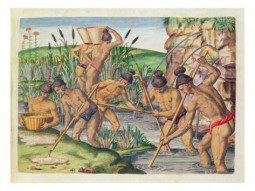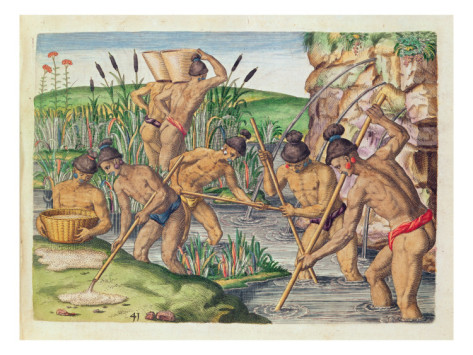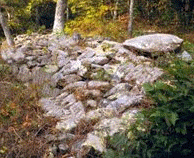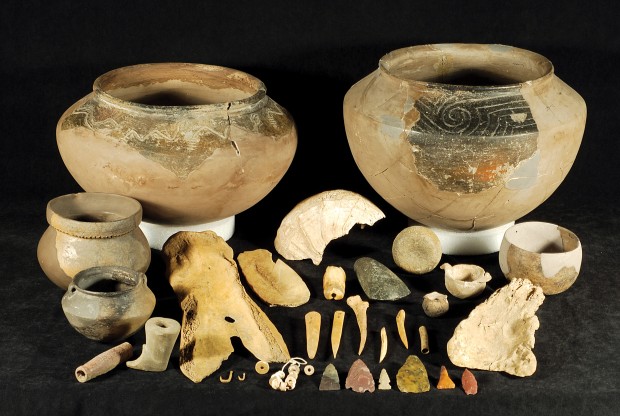Maya gold mines in Georgia?

When Europeans first stepped foot in Florida and Georgia they all recorded eye-witness accounts of Native Americans in possession of gold. The Spanish expedition of Narvaez saw a Native American wearing gold trinkets in northwest Florida and inquired about the origins of the gold. The Indian told Narvaez that it came from a far-away province called Apalachen in mountains north of Florida obviously a reference to the Apalachian mountains that begin in north Georgia. Coincidentally, these same mountains were the site of America’s first gold rush.
When De Soto entered southwestern Florida he was also told of gold in a far-away province called Apalachen. He confused this province with the Apalachee towns of northwest Florida where he found no gold. Yet a young indigenous man he met told him he was from a province from the north east which was very rich with gold. He even described in such detail how the gold was pulled from the ground, smelted and processed that the Spanish noted in their journals that he’d either seen it done or the devil had told him how it was done. The name of this rich province was Yupaha and was ruled by a woman. De Soto never found this province because his guide obviously had second thoughts about bringing conquistadors into his city after watching their behavior at other Native American towns along the way. These conquistadors were quite fond of enslaving entire towns to carry their baggage as well as throwing the chiefs to their dogs to eat if they refused to help them.
When the French first arrived in the New World they established their first colony, La Caroline, not in Louisiana but in modern-day Jacksonville, Florida. When they entered the St. Johns River they encountered a local Timucua tribe that were wearing large gold plates around their necks and gold trinkets around their legs. When asked where the gold came from they said it came from a province in the northern mountains called Apalachen.
This is quite an enigma because archaeologists have found very few gold artifacts in Native American archaeological sites in the region. The question remains who was doing the mining and what were they doing with the gold?
The first clue comes from the French at their colony of La Caroline in Jacksonville, Florida. They told the French that the people who mined gold in north Georgia were called the Potanou. These Florida Timucua were actually at war with this tribe in the north Georgia mountains and agreed to take the French to the gold mines if the French would aid them in battle against these hated enemies. This brings another question: why would a tribe in Florida be at war with a tribe in north Georgia? What interactions could they have had to lead to a state of open warfare?
Interestingly, just up the St. Johns River from these Timucua was a tribe related to the Potanou called the Potani. They lived in a province called Ocale which is where the modern city of Ocala, Florida gets its name. The Spanish conquistadors had heard this was a rich province but never actually found the main towns of the province and only visited some outlying farmsteads which convinced them the rumors of riches were false. They did record, though, that the southernmost town in the province of Ocale was named Uqueten.
Coincidentally, in Mexico there was a Mayan tribe named Poton who lived in a province named Acala. Referred to as the Chontal Maya by the Aztecs, the Chontal were master seafarers who controlled all the coastal trade routes in Mexico and Central America. They also called themselves the Yokot’an which is where the Yucatan in Mexico derives its name.
So there was a tribe named Potanou mining gold in north Georgia and a related tribe named Potani living in a province called Ocala in Florida whose southernmost town was named Uqueten. Were the Potani/Uqueten living in Ocala, Florida the same people as the Poton/Yokot’an Maya who lived in Mexico? More importantly, were they mining gold in north Georgia and shipping it to Mexico which would explain why so few gold artifacts had ever been unearthed in Georgia or Florida?
If this was an export business then the traders, like modern traders today, would have looked for the simplest, fastest way to get their goods to market in Mexico. The simplest way to get gold out of the north Georgia mountains would be to ship it in canoes down the Savannah River, the modern day border between Georgia and the Carolinas. Once at the mouth of the Savannah River they would have entered the Atlantic Ocean and, instead of going all the way around the Florida peninsula, could have entered the St. Johns River in modern-day Jacksonville, Florida which provides an all-water route directly into central Florida. Interestingly, this water route runs out south of modern-day Ocala, Florida. At this point the traders would have had to portage or unload their goods and carry it to the next set of rivers and lakes to continue the voyage to Lake Okeechobee and then to Charlotte Harbour and across the Gulf of Mexico to the Yucatan.
Thus it is likely no coincidence that at this very location where this high value commodity had to be unloaded and transported overland was the province of Ocala and another tribe named Potani. By controlling this area they could ensure the safe transport of their gold. The United States locates military bases in the Persian Gulf and other strategic locations for this very reason: to ensure the free, uninterrupted flow of a high value commodity (in this case, oil.)
Intriguingly, along this water route were multiple tribes with “Maya” in their name. Old maps show a tribe named Mayon living in South Carolina near the mouth of the Savannah River. Along the St. Johns River was a tribe named Mayaka. Around Lake Okeechobee lived a tribe named Mayaimi. And in the north Georgia mountains researcher Richard Thornton has noted there was a tribe named Itsate which means “Itsa People” in the local Hitchiti dialect. The Itza Maya created the great city of Chichen Itza in the Yucatan and were believed by scholars to be closely related to or the same as the Poton Maya.
Why were tribes with Mayan names such as Potanou and Itsate living in the gold regions of the north Georgia mountains? Why were tribes with Mayan names such as Mayon, Potani, Uqueten, Mayaka, and Mayaimi living along the all-water route from these same Georgia mountains all the way to Florida’s Charlotte Harbour. And why were Indians living in this area able to give Ponce de Leon exact navigational headings to the Yucatan when he asked for directions to a large, rich province?
The logical answer to these questions is that these people were Maya, mining gold in north Georgia, shipping it across Florida and across the Gulf of Mexico to the Yucatan but only further archaeological research will truly answer the question.
There is much more evidence of this Mesoamerican connection which I will cover in future articles. Until then you can find me on facebook, subscribe to my newsletter, watch my DVD Lost Worlds: Georgia or find out more about my upcoming book, Maya In America: The Untold Story of Ancient America.



